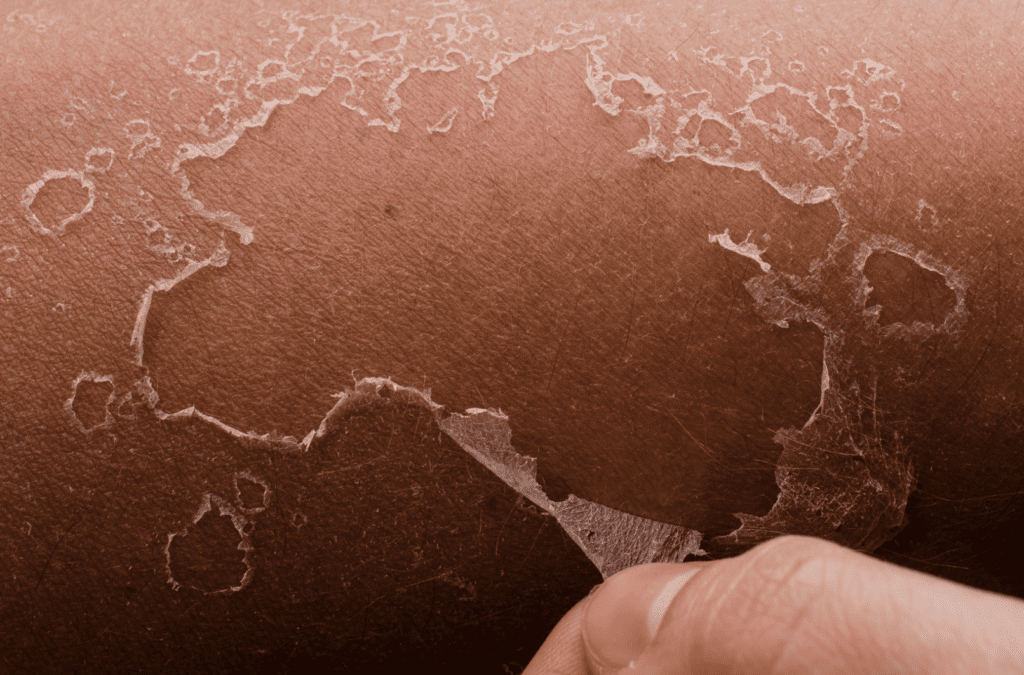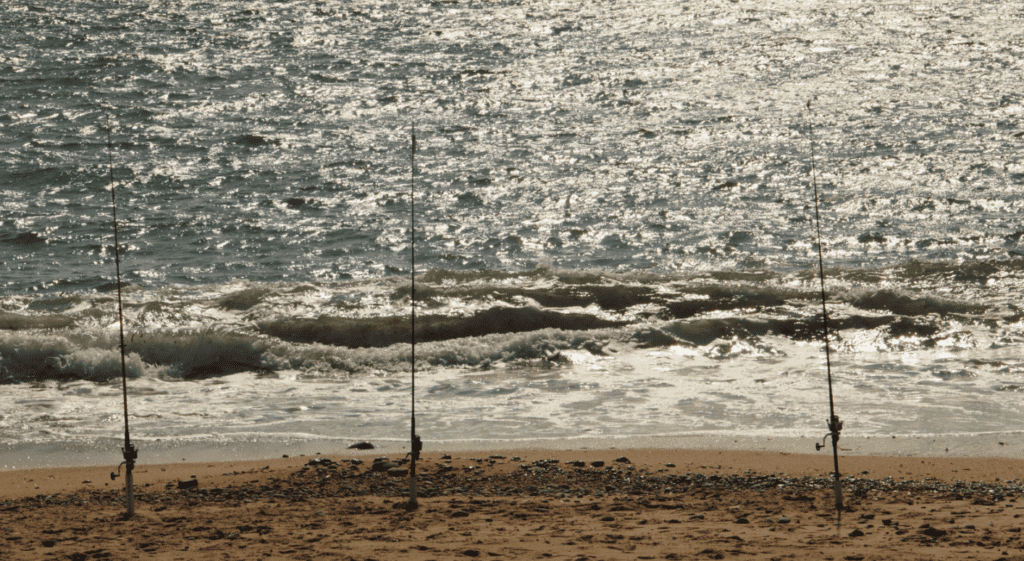The Art of Recording Ocean Sounds
It’s not enough to simply admire ocean waves from the shore. The ocean is a soundscape that deserves your full attention and recording ocean sounds can be as simple as using an iPhone or some basic equipment like a microphone, headphones, and a field recorder.
Ocean sounds are incredibly relaxing. They can help you sleep, relieve stress, and even improve your mood! There’s something about ocean waves that makes people feel better when they’re in a bad mood or need to relax.
I’m a huge fan of the ocean. Ocean sounds, on the other hand, have a rich complexity and an infinite number of possibilities. Ocean Sounds feature sound bites from waves on the beach as well as rocky shorelines, cliffs, sand and gravel beaches, and open sea noises (in the middle of the ocean).

The Art to Record the Ocean Sounds
Are you prepared to capture a wide range of rhythms, from delicate lapping sounds and gurgles to powerful, crashing seas?
The sounds and tones generated by the sea and the ocean are extremely diverse. For example, whereas waves sound considerably different close to the beach than at sea, they both produce similar sounds. It’s difficult to record ocean noises in open water since you’ll have to go out there with all of your gear. Getting aboard a big boat or an ocean liner will give you a lot of space to move around and record from different areas on the ship.
Recording ocean sounds can be very peaceful, but it’s also a great opportunity to get up close and personal with some interesting wildlife. If you’re lucky, you might even see dolphins or whales swimming by while you’re recording!
Because they do not rely on noisy engines to travel, small sailboats or boats are better suited for the job. You may hear them gliding silently over the water, allowing you to capture breathtaking sounds.
Basic Equipment and Three Steps to Get Started
There are a few things to keep in mind when recording ocean sounds. The first is that you’ll need some basic equipment. You’ll need a microphone, headphones, and a field recorder. I use an iPhone with the FiLMiC Pro app, but any decent quality field recorder will work.
The second thing to keep in mind is that you need to find a place where you can hear the ocean waves without too much interference. This might take some trial and error, but it’s worth it!
The third thing to keep in mind is that ocean sounds vary depending on location. The ocean near my house has a very different sound than the ocean near my parents’ house. So, it’s important to find a location that works for you and your recording equipment.
Once you’ve found a good spot, set up your microphone and headphones so you can hear the ocean waves clearly. Make sure the microphone is close to the ocean so you can capture the sound of the waves accurately. Then, hit record and relax!
The Calming Effect of Waves Sounds
The ocean is a beautiful and therapeutic soundscape that deserves your attention. So, next time you’re near the ocean, take some time to record its sounds. You won’t regret it! The sounds produced by water, the ocean, and the waves are truly remarkable.

For a long time, the soothing influence of waves on the beach and the continuous, relaxing sound of the surf has been utilized for medical purposes. The regular cadence of Ocean Sounds will appeal to particularly anxious individuals. Personally, I’ll take advantage of every opportunity to record near a beach – especially while traveling across the world.
Recording Beach Sounds and Waves
Nothing beats sitting cross-legged on the sand, listening to the sound of the waves, and thinking that a few yards distant, your microphones will be swept away by a large wave. The tide comes in and forces you to get up at the moment that your fish were swimming just before it.
How Do You Record Wave Sounds?
If you’re looking to record ocean waves, it’s important that you find a place where there aren’t too many people. This can be difficult, but it’s worth it! Loud noises from people can drown out the sound of the ocean waves. This might take some trial and error, but it’s worth it! Another important factor to consider is that ocean sounds differ from place to place. The sound of the ocean near my rented house is quite different from that of a beach at the hotel I stayed in.
Protect Against the Sun and Sunburn
When you’re recording ocean sounds, it’s important to protect yourself against the sun and sunburn. Make sure to wear sunscreen and a hat to protect your skin. You may also want to bring sunglasses and water to stay hydrated.


Poseidon Does Not Care About Your Health or Equipment
Poseidon was one of the twelve Olympian gods and a brother of Zeus. He was the god of the sea and earthquakes. Poseidon was a god of the sea, earthquakes, storms, and horses who is regarded as one of the worst-tempered, irritable, and avaricious Olympians.
Poseidon Doesn’t Care About Your Recordings
Poseidon is unconcerned with recordings, and warning signals are produced by humans. The most hazardous beaches are generally the least visited – few people want to deal with huge waves. There are no people here, so there won’t be any chatting or shouting that will ruin your recordings.
When making sound recordings in hazardous places, be cautious. Do not let your music equipment sink to the bottom of the ocean or get carried out to sea. You should always be on the lookout for possible hazards. The water may appear calm and clear, but it can swiftly turn dangerous. You’ll want to use a rope or other form of rescue if you find yourself in this sort of scenario: A strong current of water can change rapidly, and you may move swiftly in it. A wave may easily sweep you and your equipment away.

Equipment Maintenance Sunlight, Sand, Dirt, and Salt
Equipment will be destroyed if it is submerged in salt water, sand, or dirt. All electrical equipment is susceptible to corrosion and deterioration if left in salty water for extended periods of time. Saltwater will corrode metal, eat through your conductor boards, and leave debris behind in every nook and cranny of your equipment.
It’s important to know that salt water is also highly saliferous; you don’t even need to put your equipment into salty water to damage it! All of these factors will hasten the deterioration of your gear.
To protect your valuables and equipment, I recommend that you use every available method to keep filth off of them. SALT AND SAND DUST will not only settle between the knobs and inside the electronic components, but they will also enter the sensitive microphone membrane and make it more inert. In the long run, this might result in a deterioration of sound quality, especially for condenser microphones.
Protect Your Field Recorder – Sand Is Your Enemy
Field recorders are a necessary piece of equipment for anyone interested in ocean sounds. They are used to capture the sounds of the ocean and its inhabitants. However, they are also susceptible to damage from the environment in which they are used.
To protect your field recorder, I recommend using the following tips:
- Keep your field recorder clean and dry. This will help to prevent corrosion and damage.
- Use wind protection when recording in high-wind situations. This will help to keep the microphone from being damaged by the wind.
- Be aware of your surroundings and potential hazards when recording ocean sounds. This will help to keep you and your equipment safe.
By following these simple tips, you can protect your field recorder and create high-quality ocean sound recordings.
Sand is one of the main enemies of field recorders. It can cause corrosion and damage to your equipment if it’s not kept clean and dry. In addition, wind can cause noise in your recordings, which can be difficult to remove in post-production. Be aware of your surroundings and potential hazards when recording ocean sounds to keep yourself and your equipment safe.
Waterproof bags
Another way to protect your equipment is to use a waterproof bag. This will keep your gear from getting wet in case of a sudden rainstorm or ocean splash. There are many different types of waterproof bags available on the market, so be sure to select the right one for your needs.
When selecting a waterproof bag, keep in mind the following factors:
- The size of the bag
- The type of equipment it will hold
- The material it is made from
- The type of closure system
Be sure to select a bag that is big enough to hold all of your equipment. The type of closure system is also important, as it should be able to keep out water and sand. The material should be strong enough to withstand the elements.

To ensure that everything is secure, pack your recorder with all of its attachments (batteries, chargers). You can put the recorder in your luggage while recording, zip it up and keep it safe; you won’t have to check the levels all the time.
Windshields and Windjammers Protect Sensitive Microphones
One way to protect your equipment is to use wind protection. This is accomplished by using a windshield, fur cover, or windjammer. These accessories will help to deflect the wind and keep it from hitting the microphone head directly.
When you’re recording in a high-wind situation, it’s important to use some type of wind protection. If you don’t, the wind will cause noise in your recording. This noise can be difficult to remove in post-production. In some cases, it might be impossible to remove the noise without ruining the recording.
There are many different types of wind protection available on the market. You can choose from a variety of products, including:
- Fur Covers
- Foam Windscreens
- Plastic Windshields
- Metal Mesh Screens
Be sure to select the right protection for your equipment and the environment in which you will be using it.
When selecting a place to record ocean sounds, keep in mind that different coasts have different soundscapes. In addition, always take into account the weather conditions and potential hazards when making your recordings. Use caution when recording near hazardous beaches and use wind protection if necessary. Finally, remember to keep your equipment clean and dry to prolong its life.
Periodically Assess Your Needs
Keep an open mind when shopping on eBay and you may find great bargains! A second thing to think about is your needs, maybe it will require lighter gear. You may decide that you don’t use these microphones, but you’ve moved on to the plug-in microphone and are comfortable in a pocket recorder. If you do not have enough funds or weight on your equipment, it’s okay to use professional equipment.
Choosing a Sound Recorder for Nature Recording: The Essentials
When you’re looking for a sound recorder to use for nature recordings, there are a few essentials that you’ll want to keep in mind. The first thing to consider is the environment in which you’ll be recording. If you’re recording ocean sounds, you’ll want to make sure that your recorder is waterproof.
Another thing to consider is the weight and portability of your recorder. If you’re going to be hiking or walking around to find different recording locations, you’ll want a lightweight and portable recorder. You’ll also want to make sure that your batteries are fully charged before heading out on your nature recording expedition!
Finally, make sure that you have all the necessary cables and adapters to connect your recorder to different types of microphones.
Recording Ultrasonic Frequencies
There are ocean sounds that you can only hear if you have the proper equipment. If you would like to record ocean noises, it might be easier for you to purchase a microphone that is meant to capture higher frequencies rather than spending time trying to find an animal or device capable of producing them naturally. You could also try recording with underwater microphones which are built to capture ocean sounds as well as the animals that make them.
Balance Your Needs and Your Budget – Identify Your Budget
When trying to decide between purchasing or renting ocean sounds equipment, you need to determine both your needs and budget.
Ocean sounds can be expensive depending on what type of kit you’re looking for. For example, if it’s the first time recording ocean waves sound effects then an option would be to rent a quality microphone kit with wind protection at around $100 per day; this price includes everything minus an audio recorder.
If adding other microphones is needed like overhead inside mic kits (for capturing seagulls) along with outside overheads (to capture crashing waves against rocks), additional external mics may have rentals starting around $200 per week which are typically used by professional recordists who plan ahead in advance for their next projects – these prices are for ocean sounds that include seagulls and ocean waves crashing on rocks.
In order to find ocean sounds equipment rentals near you, Google is a good starting point as it will list the closest providers from your location along with contact information so you can reach out beforehand. You may also check Craigslist or local music stores in your area which carry audio recording gear such as Shure SM58 microphones used by DJs – this could be an option if only renting one microphone at a time instead of larger kits costing more money.
If looking into purchasing quality ocean sound effects then prices range widely depending on what type of kit(s) are needed; however, it’s common knowledge that spending extra money upfront saves struggling later when trying to find the right ocean sounds.
Angling Ocean Sounds with A Boom Pole
When angling ocean sounds, the use of a boom pole can be a great way to get those desired sound effects. By placing the mic near the source of the sound, you can minimize any unwanted noise and achieve a high-quality recording.
There are a few things to keep in mind when using a boom pole for ocean sounds. First, make sure that the pole is fully extended and that there is no slack in the cable. Next, adjust the height of the mic so that it is as close to the ocean as possible. Finally, use a windscreen to protect the mic from the elements.
By following these simple tips, you can ensure that you get the best possible recording of ocean sounds. The Boom Pole’s design helps you frame your catch more easily sound, and it also makes it appear that you have more fish than you do. When passers-by see the pole, they may approach you to determine how many fish you caught since they mistake the boom pole with a fishing rod.

When recording water, a boom pole extends your reach, which is quite useful. You can record the microphone just above the surface without having to get too close to it. If you don’t have a pole, going as near to the surf as possible will give you great footage.
Field Recording – Recording Wave Sound Effects
When it comes to recording ocean waves, it’s important to find a location that offers a variety of sounds. Some good options include rocky shores, beaches, and harbors.
Once you’ve selected a location, set up your equipment and begin recording. Be sure to capture both the sound of the waves crashing against the shore and the sound of the ocean itself.
If possible, try to record for a variety of different weather conditions. This will give you a range of sounds to choose from when editing your final recording.
When editing your recording, be sure to use caution and make sure that all sounds are appropriate for your project. Also, check for any background noise or distracting sounds that may need to be removed or reduced. Additionally, consider enhancing recording tonal quality with reverberation to give your audio a more professional and polished sound. This can help create a rich and immersive listening experience for your audience.
Recording Ocean Sound Effects
When field recording ocean sounds, there are a few things to keep in mind in order to get the best possible recording. First, make sure that you have a quality microphone and that it is properly protected from the elements. Next, adjust the height of the mic so that it is as close to the ocean as possible. Finally, use a windscreen to protect the mic from the elements.
By following these simple tips, you can ensure that you get the best possible recording of ocean sounds.

Underwater Microphones
Underwater microphones are a great way to capture ocean sounds. They are designed to be used in aquatic environments, and they can provide great sound quality for your recordings. If you are looking for a reliable and affordable microphone to use for this purpose, then an underwater mic is a great option.
Hydrophones for Underwater Sound Recordings
When looking for equipment to record ocean sounds, hydrophones are a great option. Hydrophones are microphones that are specifically designed for use underwater and offer superior sound quality when compared to regular microphones.
Sometimes the most beautiful sounds can be found in the most unexpected places! What sound would come out of this tiny metal pipe filled with saltwater when a hydrophone is placed inside?
There are a variety of different hydrophones available on the market, so be sure to do your research before making a purchase. Some factors to consider include the type of ocean you will be recording in, the depth of the water, and the ambient noise levels.
Once you have selected a hydrophone, be sure to test it out in different environments prior to beginning your project. This will help ensure that you get the best possible results from your recordings.
The hydrophones may also be utilized in mud, as Tim Prebble was attempting to put the hydrophones straight in the middle of the pool and it was fascinating to hear so much activity below the surface, with such variety and range, by moving the hydrophones.
They eventually maneuvered to a gloopy, bubbling mud vent and captured individual bubbles, as well as later putting the kids in a little fumarole. The mud did not cause any problems with the hydrophones, which is fortunate since we had to remove it all: the hydrophones, cables, recorder bag, and Tim!
Check out the video below for a behind-the-scenes look at how this project was made, with footage from twelve distinct locations in the mud pool.
FX009 MUD POOL X HYDROPHONE is available at HISSandaROAR.
List of Sounds to Capture While at The Beach
There are many different ways to capture ocean sounds. By following these simple tips, you can ensure that you get the best possible recording of ocean sounds for your next project!
Sound of Sand and Gravel Beaches
When looking for the sound of sand and gravel beaches, it’s important to find a location that offers a variety of sounds. Some good options include rocky shores, beaches, and harbors.
Once you’ve selected a location, set up your equipment and begin recording. Be sure to capture both the sound of the waves crashing against the shore and the sound of the ocean itself.
If possible, try to record for a variety of different weather conditions. This will give you a range of sounds to choose from when editing your final recording.
When editing your recording, be sure to use caution and make sure that all sounds are appropriate for your project.

Bubbling and Gurgling Between Rocks and Cliffs
You can easily capture the bubbling and gurgling between rocks and cliffs. This gives your recordings a more realistic feel, and makes it sound like you’re really there! Small microphones may be inserted into the rocks’ cracks and hollows, allowing for the gurgling noises to be captured in their full detail. The sounds also change according to the tide.
There are many different ways to capture ocean sounds. By following these simple tips, you can ensure that you get the best possible recording of ocean sounds for your next project!
Wind and Water Spray
A wind and water spray microphone is a great way to record ocean sounds. This type of mic has an outer shell surrounding it which allows them to be placed right in front or behind large waves without any damage occurring. It’s important not to place objects directly into the path of oncoming waves as this may cause irreparable harm to the gear being used.
In addition, by placing a windscreen around the device, you’ll have better results when capturing howling winds from all directions at once because they won’t overpower other components in your audio mix such as ocean sounds or dialogue.

Recording Beach Sounds and Waves
Once you’ve selected a location, set up your equipment and begin recording. Be sure to capture both the sound of the waves crashing against the shore and the sound of the ocean itself.
If possible, try to record for a variety of different weather conditions. This will give you a range of sounds to choose from when editing your final recording.
Ocean Sounds – Waves and Winds
Once you’ve selected a location, set up your equipment and begin recording. Be sure to capture both the sound of the waves crashing against the shore and the sound of the ocean itself. If possible, try to record for a variety of different weather conditions. This will give you a range of sounds to choose from when editing your final recording.
Waves and Water on Rocks and Stones
One of the most iconic sounds associated with the ocean is the sound of waves crashing against rocks and stones. This sound can be easily captured by finding the right location and setting up your equipment correctly.
Once you’ve selected a location, set up your equipment and begin recording. Be sure to capture both the sound of the waves crashing against the shore and the sound of the ocean itself.
You can also find great ocean sounds while walking on a wooden pier or dock as well – just be careful not to get too close to the water! If you’re looking for a more relaxed ocean ambiance, consider recording the sound of waves lapping against the shore.
Conclusion
The sounds produced by water are among the most incredible noises on our planet. The roar of waves, the thunder of breaking waves on shingle and sand beaches, and the faint, steady beat of little waves are all part of the ocean noises that have enthralled us since antiquity.

Listening to the sound of waves and the roar of the surf is like traveling in time: just as the sounds of weather and wind have been with us since primordial times, so too has the sonic experience of water and ocean, which is likely no different on distant planets.
You may also hear some amazing undersea crackles, clicks, and pops once you’ve gathered all of your recordings in your studio. Get started today and collect several tiny boats and huge cargo vessels as they passed beneath the surface.

You may also get really spooky with sound effects, such as rattling chains or distant beaches where the water splashes and rock formations create murmuring waves. By following these simple tips, you’ll be able to create high-quality ocean sound recordings without any headaches!










